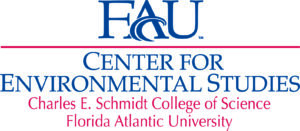By Albert J. Slap, Coastal Risk Consulting
Perhaps you’ve heard of PropTech, CRETech, InsurTech, and FinTech.
These “techs” perform valuable functions for the commercial real estate industry from building automation to faster rent collection to online marketing.
But none of them work very well when the underlying assets are damaged or shut down for lengthy repairs because of floods, natural hazards, and climate threats.
Now, there’s ResTech (short for “Resilient Technology”).
From 2017 to 2019, the U.S. experienced a historic number of weather and climate disasters. They included droughts, floods, freezes, severe storms, tropical cyclones and wildfires. The cumulative cost of these disasters exceeded $450 billion, a significant increase from earlier in the decade, according to NOAA.

The frequency and severity of these disasters is expected to continue to increase, according to the U.S. National Climate Assessment.
And according to Munich Re’s 2020 Catastrophe Report: Global losses from natural disasters in 2020 came to $210 billion. The report also said that both “overall losses and insured losses were significantly higher than in the previous year.”
ResTech is important for the commercial real estate sector and, it is here now. One such technology, which was recently adopted by the U.S. Green Building Council, is the RiskFootprint™ platform by Coastal Risk.
RiskFootprint™ allows owners, operators, and investors in commercial real estate to identify both the hazards and the vulnerabilities of assets in their portfolios and new acquisitions and begin to make them safer, more sustainable, and resilient.
RiskFootprint™ reports for the property and the surrounding market area provide commercial real estate with a simple tool to provide comprehensive information to support USGBC certification processes.
Automated, ResTech tools such as RiskFootprint™ allow owners, developers, investors, and lenders to identify properties that are particularly vulnerable to physical risks. This enables risk mitigation resources to be focused on vulnerable sites for further risk assessments or risk management.
There is evidence that commercial properties owners who fail to take action to improve the resilience of their facilities are susceptible to financial risks that may far surpass the costs of using resilience measures upfront.
Building owners are beginning to understand that improving resilience is not just a best practice, but a growing requirement to preserve the value of their assets, protect occupants, and attract investments. This is particularly true in risk-prone regions vulnerable to sea-level rise or wildfires.
For every dollar invested in climate resilience, $6 are saved, according to such organizations as the U.S. National Institute of Standards and Technology.
“Resilience is emerging as a critical issue for commercial building owners, particularly in light of recent disruptions from climate and weather events. Owners and operators of commercial buildings are placing a greater emphasis on improving the resilience of their assets and mitigating risk from natural disaster shocks and stressors,” according to the U.S. Department of Energy’s “Building the Financial Business Case for Resilience.”
U.S. society is very complex, and, unfortunately, much too fragile. We have recently seen what happens when compounding challenges come along and our economic system goes into a nosedive.
In 2008’s sub-prime mortgage crisis, the housing market crashed and the world slid into a global recession. In 2020, a microscopic virus — COVID-19 — brought a much larger wrecking ball to our shores. In many areas, 2020’s hurricanes, floods and wildfires added to the COVID damage.
Resilient technologies, or as Nicholas Nassim Taleb would say, “antifragile” technologies, are the way of the future.
ResTech, such as the new, RiskFootprint™ platform, provides a path forward for commercial real estate to make their assets safer, more sustainable, resilient, and more profitable.
Albert J. Slap is President and Co-Founder of Coastal Risk Consulting, LLC, a geospatial technology, modeling, and data analytics company located in Boca Raton, Fla. Coastal Risk’s technology empowers individuals, businesses, and governments to accelerate resilience to floods, natural hazards, and climate impacts. Prior to launching Coastal Risk, Mr. Slap was a nationally recognized, environmental attorney and law professor. For his outstanding legal work, Mr. Slap was the recipient in 2014 of the prestigious Marjory Stoneman Douglas “Defender of the Everglades Award.”
“The Invading Sea” is the opinion arm of the Florida Climate Reporting Network, a collaborative of news organizations across the state focusing on the threats posed by the warming climate.



